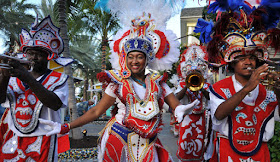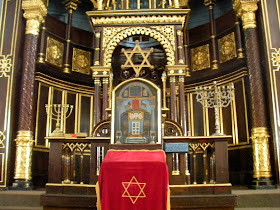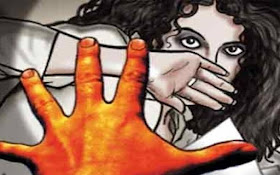Religion precedes the cities while culture succeeds them. A
city does not bring culture as a predetermined or established entity; culture
grows as the city grows and interestingly it never stops growing. Mechanical
views on culture always posit it as something that has started at some point of
time and consolidated over a period and remains static for the succeeding
generations to pick up, emulate, choose, discard or use it as a touchstone for
furthering their activities. Culture, as we understand today as a pack of finer
sensibilities developed by the people in country, city or province, is not
really a system of finer sensibilities deliberately articulated for the future
use. In the final analysis culture is the common characteristics developed and
distilled in and by a society, that continue in different forms till the
present. Though sectarian thoughts of today have made us to think about culture
as created differently by different groups of people in a society exclusive of
each other, in reality a culture cannot exist in exclusivity unless it is
militantly guarded by exclusionary practices.
Eating, drinking, dressing and anything related to the
public and private practices of human beings in a society carry the traits of
the cultural peculiarities of a particular place. The idea of culture or the
manifestations of it that we see in a given place is the continuity as well as
re-adaptations of the cultural practices existing elsewhere. In the process,
most of these practices are improvised, refined, added and re-positioned in the
social sphere, which become the part and parcel of the awareness and social
consciousness of the people who live in that particular place. Therefore a
country’s culture is not really different from the culture of the neighboring
country though apparently they look different in their manifestations. The overlapping
that is palpable in the cultures of the two countries stand as a proof for the
intermingling, transition and transference of cultural practices in the
geographically connected areas. Even if the countries are separated by a
mountain or by sea, or even if they are racially and linguistically different,
one could see certain identical threads that connect the birth and death rituals,
which confirm the erstwhile connectivity of those different cultures.
Even if countries are disjointed by mountains and seas,
commerce that had started ever since the settlement of human beings in certain
regions on earth (and even before that the explosion of human race from the
mythological and biological places of origin to other parts of the earth
through nomadic activities), cultures have been in communication with the other
cultures though in a surface they all look different and separated by disparate
practices. Considering that the primary conditions that differentiate one
social practice from the other therefore forcing the cultures look different
are weather, geography, food habits and source of economy, we have to understand
that the apparent differences in cultures are consolidated by the above
mentioned conditions. As the distance between two places increases the
customary practices and the resultant cultural outlook also change accordingly.
However, fundamentally they remain the same.
If countries are different in cultural practices, provinces
within the country also could look different with the change of climatic and
geographical zones. Commerce and colonialism since the origin of history have
made considerable contributions to the composite cultures within the same
region. Mythology has played a very crucial role in making the culture of a
country through the common thread of mythological stories. As I have argued in
one of the early chapters, religions help the cities form around them therefore
culture also gets focus in cities mainly because the mythologies that help the
culture grow and connect with the provincial cultures originate from the
religions. All the finer sensibilities interestingly are developed around the
religions. Mythologies are created and performed through grammatical
articulations of the same in different forms of expressions mainly in the city
centers where the patronage for such expressions are often found. The same grammatically
oriented cultures move from the cities to the rural areas losing the grip of
grammar slowly and take the form of very daring cultural experiments. It does
not mean that the rural areas are passive recipients of the urban cultural
practices. They in turn also imbibe the beauty and rawness of the rural
expressions in order to embellish the grammatically structured cultural
expressions.
Those who understand the fact that culture is not an
exclusionary practice but an inclusionary one that develops over a period of
time and is practiced by various kinds of people in the same place, making
their own views on it also understand the cultures of different places and of
people should be respected and if need be taken into their own lives. A city
becomes interesting to live in when all cultures are celebrated as a part of
living continuity and other cultures are not disparaged or resisted. The
culture of a city is not just about having a lot of avenues to express the finer
sensibilities of the people who live there, on the contrary it is the same
people’s ability to live harmoniously with various cultures and celebrate all
of them with some kind of participatory zeal. Unfortunately, our cities have
forgotten this basic lesson of having divergent and vibrant cultures. In an
attempt to make the city life unified in a monotonous fashion, the state and
the people who hold power in various strata of social life make one culture
dominant over the other thereby creating schism between people who uphold
cultures different from the dominant one.
A city is a conglomeration of different provinces and the
provincial cultures also migrate with the people from the rural areas and
fringes. One could say that it is the arrival of nature into the platform of
culture or in other words we could say that it is the entry of grammar-less
structures into the grammatical structures. These juxtapositions further result
into a new culture where everyone finds a bit of their culture within the
dominant one or in other terms, each culture looks dominant therefore adorable
like the pages in an interesting novel. Each time we read one page we find it
so important to be neglected; while it remains as an independent narrative in
itself, it constitutes the larger cultural outlook of the city.
With religion becoming the defining factor in the cities
culture becomes subservient to the domination of the religions and pertaining narratives.
People mistake culture as refinement in social manners. While one could be very
much refined in social manners he or she could harbor extremely retrogressive
ideas about the culture. It could range from holding one culture over the other
to the refusal to acknowledge rest of the cultures. A city is a cosmopolitan
space where culture is being produced and reproduced. There are so many factors
that influence the growth of the culture. It is not a static entity that remains
unchanged with the time. The changes that influence the general culture of city
and society make it a part of the universe and not too different from the
people living elsewhere. One we understand that the cultures are not mutually
exclusive, then we would learn to respect all what is foreign to us. The
respect does not mean that subservience. The moment culture renders us to be a
part of the universe we automatically become universal citizens devoid of
nations and religions, and at the same time carrying the traits of the nations
and religions that we happen to belong to. Being cultured does not mean that
being refined in taste. Being culture however does mean that accepting the
other cultures with reverence and love. Somewhere we lack in this understanding
that’s why on the same platforms we respect the art forms from different places
but just hate the people and their religion and nationalities. That’s why we
make war with the same people who sing for us. The day we recognize that
culture is not personal refinement but making our personal existence a part of
the universal existence and realize it in our personal lives, we could call
ourselves really cultured or having a culture of our own. Till then we will
remain barbarians who could hold a champagne glass, talk elegantly and listen
to Chopin while we dine well.
































